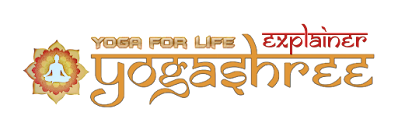Understand Your Body. Yoga gurus in ancient India succeeded in uncovering this secret. Despite all external actions, to stay healthy in food, to keep the soul alive, and to stay fresh regardless of age, Bharatiyas (Indians) accepted Yoga as a part of life. Which attracted the attention of the whole world. For hundreds of years, Indian culture, which has made yoga the basis of life, has been seen as a beacon to the world.
What is Pancha Prana?
In the Vedic period, the Gurus gave society a wonderful vision of the science of the soul. The action and reaction of the outer universe and the inner universe are also the same. At the subtle level, the universe is present in the consciousness, and the manifestation of the universe exists in the body or body.
Panchabhuta's body protects the soul in the body with the help of the five senses. The soul controls the mind and senses. According to Ayurveda, the soul is completely different from the air. Which is called Panchaprana in Vedic scriptures.
The soul is one in the body, but the soul is divided into five parts according to its location and function. Along with this, the body also has 5 organs that work to purify the breath. Which affects the body's fundamentals and is related to the chakras.
What are the Five Prana Vayus?
Five Prana Vayus are:
- Prana
- Samana
- Apana
- Udana
- Vyana
- Prana: The air required for heart action is received by the body through the mouth and nose.
- Samana: Samana Vayu carries air from the intestines to the navel and acts as a filter.
- Apana: Apana Vayu carries air from the navel to the feet and performs the functions of urination and excretion.
- Udana: It moves the air from the throat to the head and keeps the air in a straight position.
- Vyana: That which is present in the whole body.
Image Source: Google | Image by: the yoga school
Where is the prana vayu located?
Panchaprana and Its Location in the Body
Prana: From the throat to the heart
Samana: From the bottom of the heart to the navel
Apana: From the bottom of the navel to the foot
Udana: From the top of the neck to the head
Vyana: All over the body
What is the function of the Upa-pranas?
The human body has five Upa-pranas along with five Pranas. Which works to keep the soul cells clean, healthy, and healthy. Actions like coughing, sneezing, flapping, yawning, and itching are performed by the five Upa-pranas namely
- Naga
- Krinkala
- Kurma
- Devadatta
- Dhananjay
Now find out the location of Panchaprana.
Location of Pancha Upa-Prana
- The Prana Vayus Upaprana Naga is above the navel.
- The Samana Vayus Upaprana Krinkala is located on the lateral side of the respiratory tract.
- The Apana Vayus Upaprana Kurma stays in the eyes.
- The Udana Vayus Upaprana Devadatta is located on the upper part of the trachea in the throat.
- The Vyana Vayus Upaprana Dhananjay is located in bones, skin, blood, and hair.
Pancha Upaprana is also related to Panchabhuta in the body. The soul and sub-soul are connected to a particular element and help to activate a particular cycle.
Pranavayu activates the Anahata Chakra.
Samana Pranavayu activates the Manipur Chakra.
Apana Pranavayu activates the Muladhara Chakra.
Udan Pranavayu activates the Vishuddhi Chakra.
Vyana Pranavayu activates the Swadhisthana Chakra.
Prana Vayu is activated by air, Samana Prana by Fire, Apana Prana by Soil, Udana Prana by Space, and Vyana Prana is activated by water.
Pancha Upa Prana and Its Functions in the Body
- Naga: Naga is the air that regulates burping.
- Krinkala: Krinkala is the Upa-prana that governs sneezing.
- Kurma: Kurma is the upa-prana that controls contracting movements that are blinking and allows for vision.
- Devadatta: Devadatta controls yawning.
- Dhananjaya: Dhananjaya controls the functioning of heart valves. Sleeping, producing phlegm, circulation of blood, particularly in the heart, and decomposition after death.
















No comments:
Post a Comment
Thanks for reading my blog